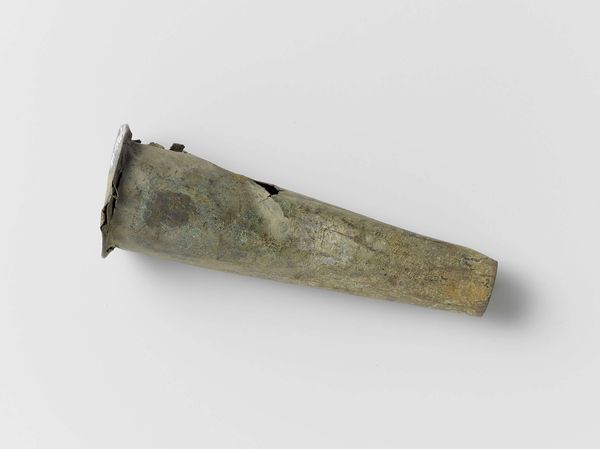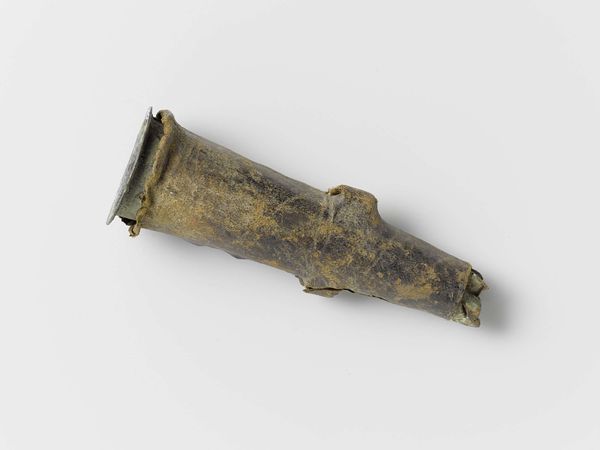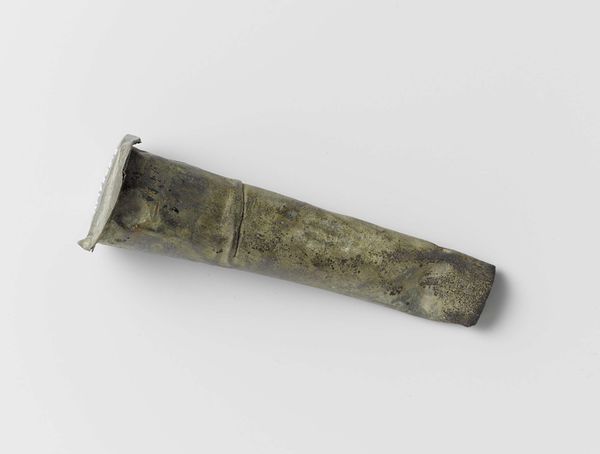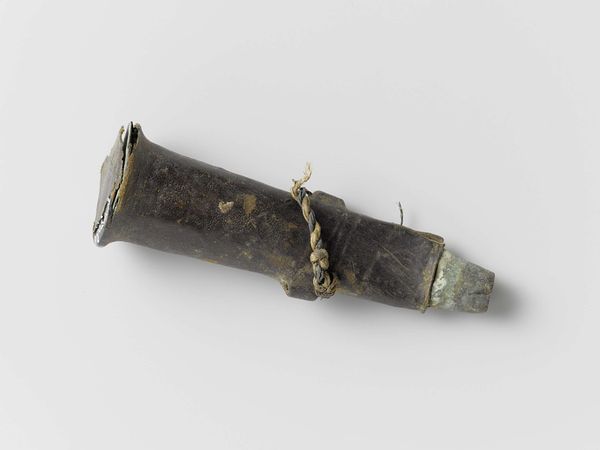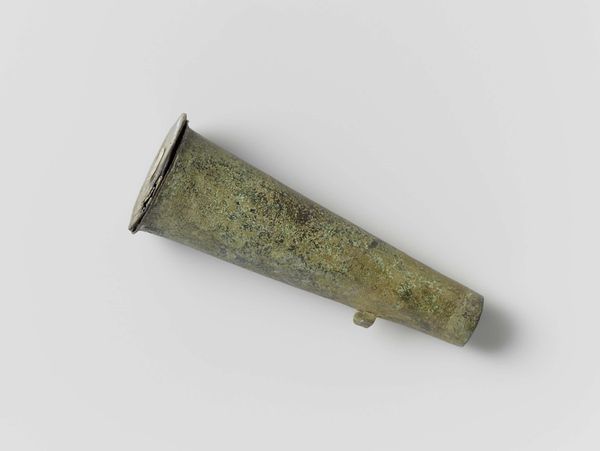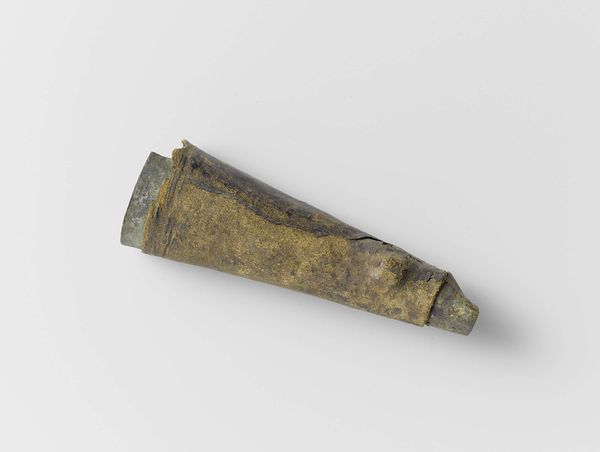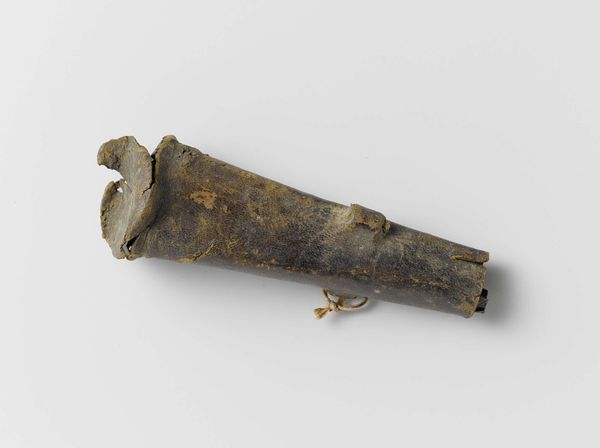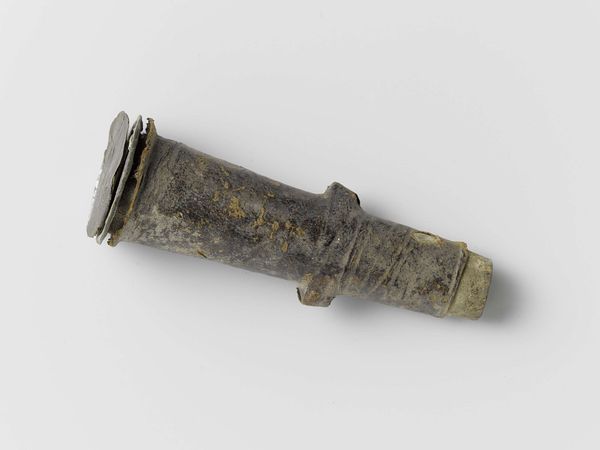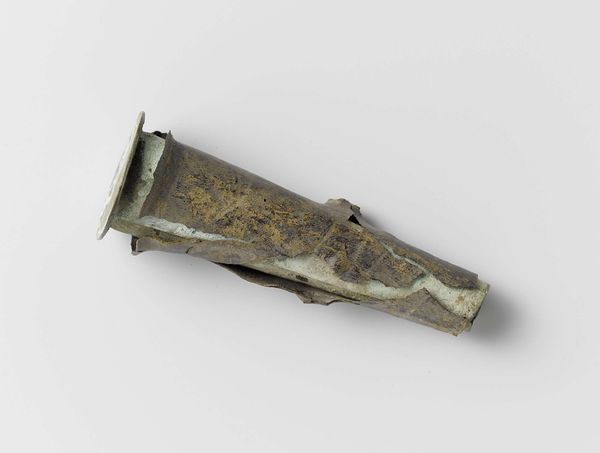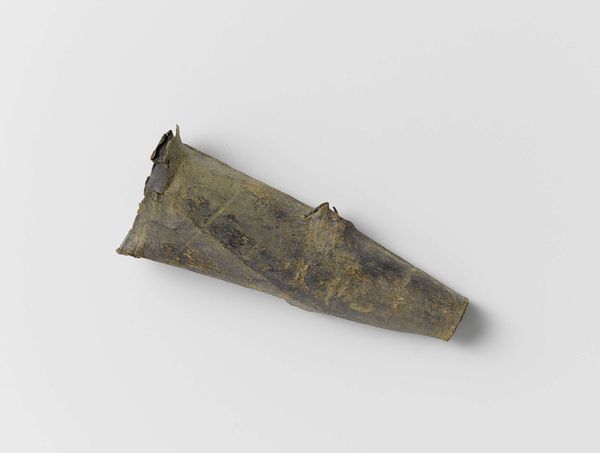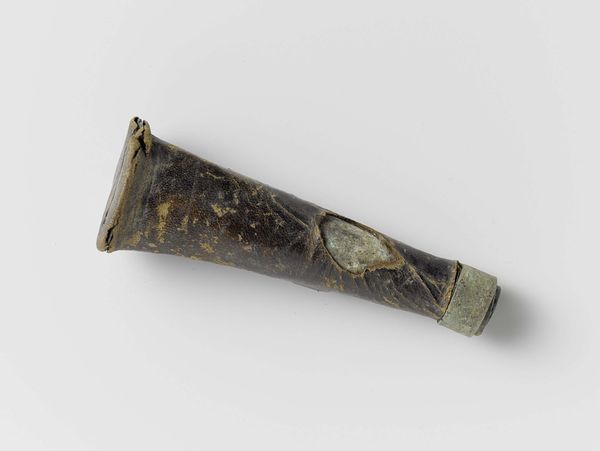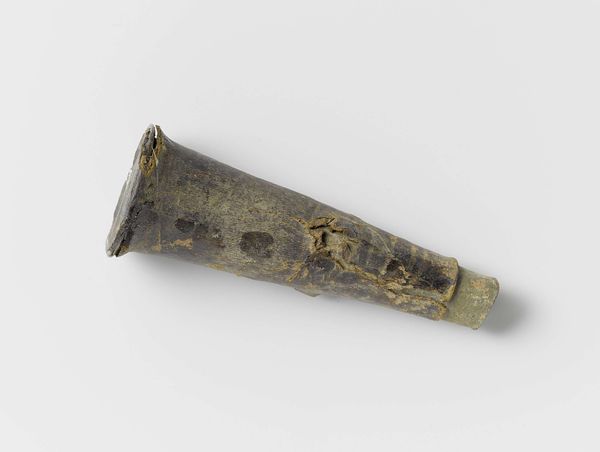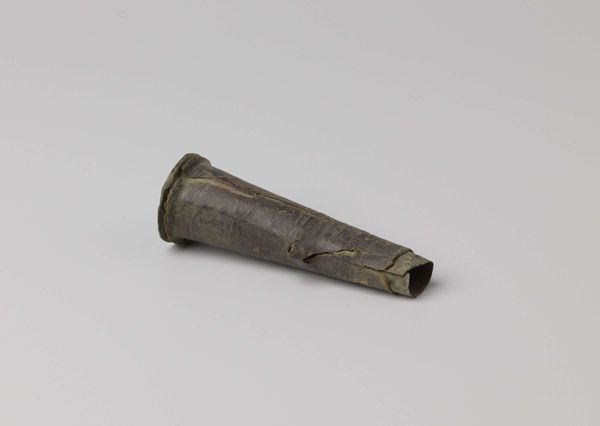
Musketmaat, fragment bestaande uit messing huls met losse onderzijde c. 1590 - 1596
0:00
0:00
anonymous
Rijksmuseum
assemblage, metal, sculpture
#
medieval
#
assemblage
#
metal
#
sculpture
#
history-painting
Dimensions: height 11 cm, diameter 3.6 cm
Copyright: Rijks Museum: Open Domain
Curator: This is a musket gauge fragment, dated from around 1590 to 1596. The object, fabricated from brass, now resides in the Rijksmuseum's collection. The wear is intense, and suggests significant use. Editor: Wow, it's such a small and seemingly simple object, but the age is quite evident. What strikes me most is the history it implies - this piece saw action! What do you see in this fragment, in terms of broader contexts? Curator: I view it as a tangible manifestation of power dynamics during the late 16th century. Who had access to these weapons? What was the human cost of the conflicts they enabled? The rise of firearms fundamentally shifted warfare, and this unassuming object speaks to that transition. Editor: So you see it as directly related to a shift in social structures, perhaps even societal upheaval. Were firearms accessible to all, or just certain groups? Curator: Exactly! Access to these weapons was often determined by social class and political allegiance. Consider how marginalized groups might have been further disadvantaged by the asymmetry of power that firearms created. Did they have equal access? What narratives were used to justify this control? Editor: It's a stark reminder of the uneven playing field. It definitely makes me question the romanticized views of history that we're often presented with. Thank you. Curator: It makes me reconsider the legacy of technological advancement and to not isolate a simple tool from its context, its effects and the politics surrounding the way it impacts the social order. It encourages us to interrogate the narratives that are privileged in historical accounts.
Comments
No comments
Be the first to comment and join the conversation on the ultimate creative platform.
